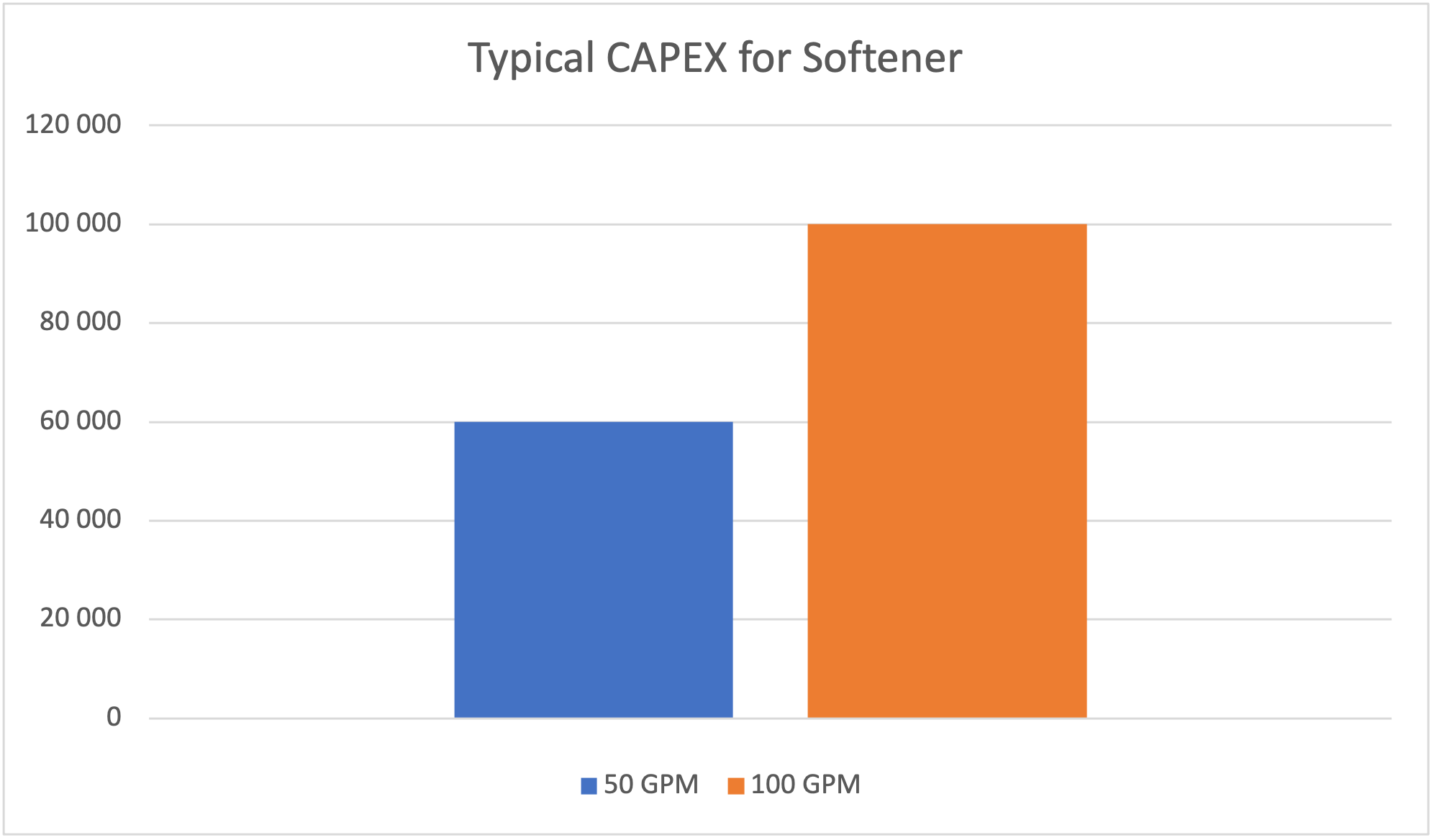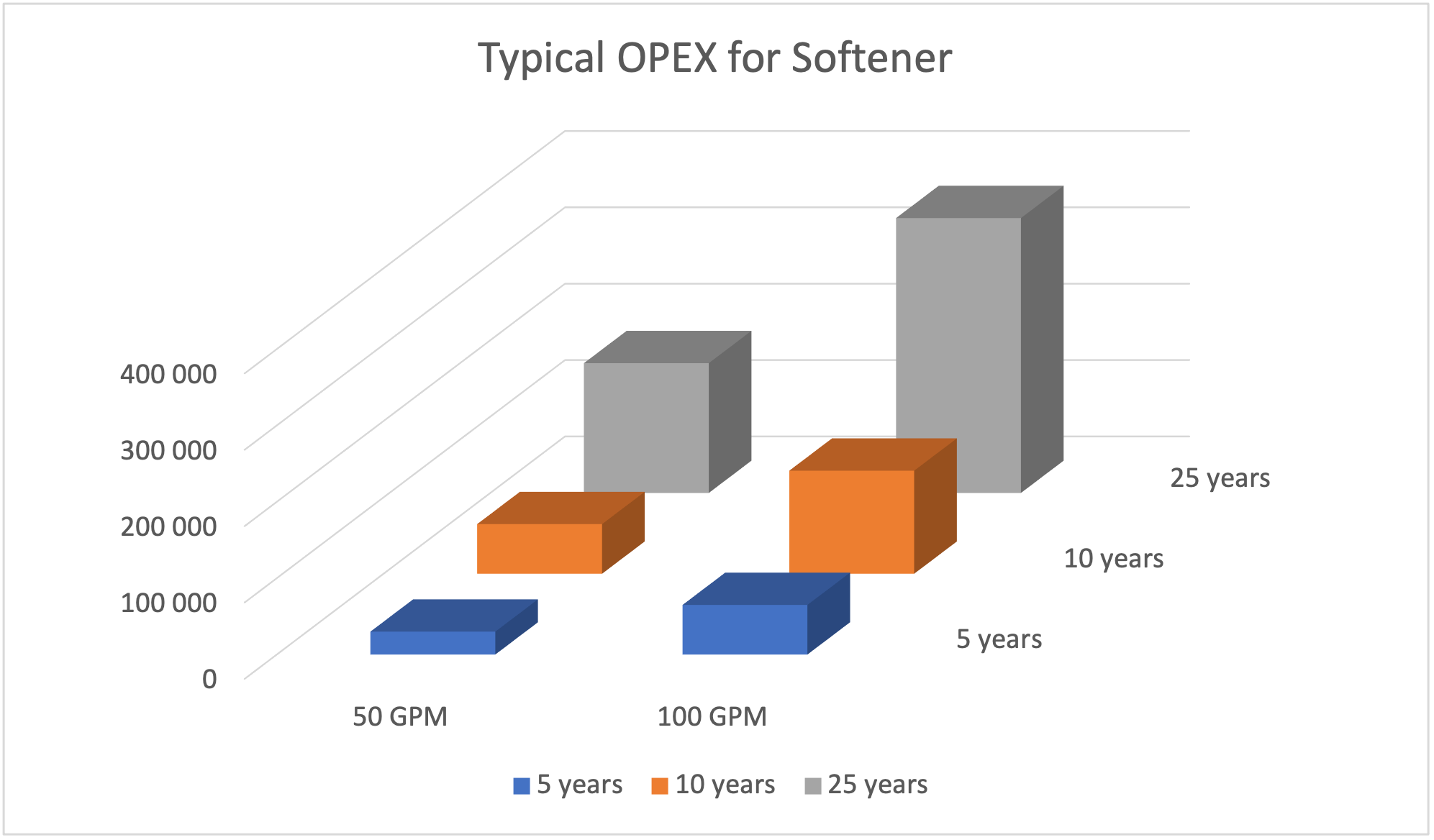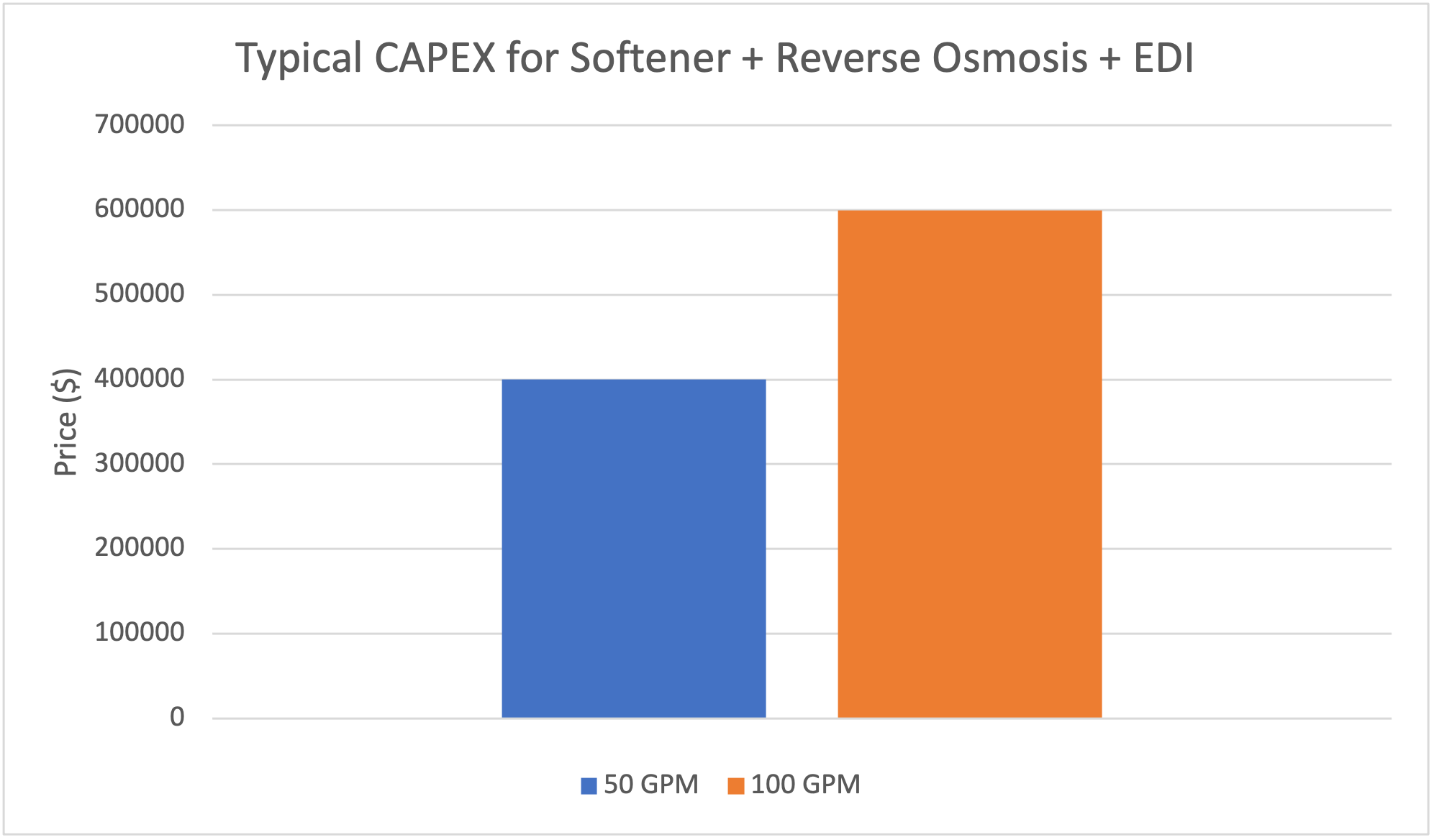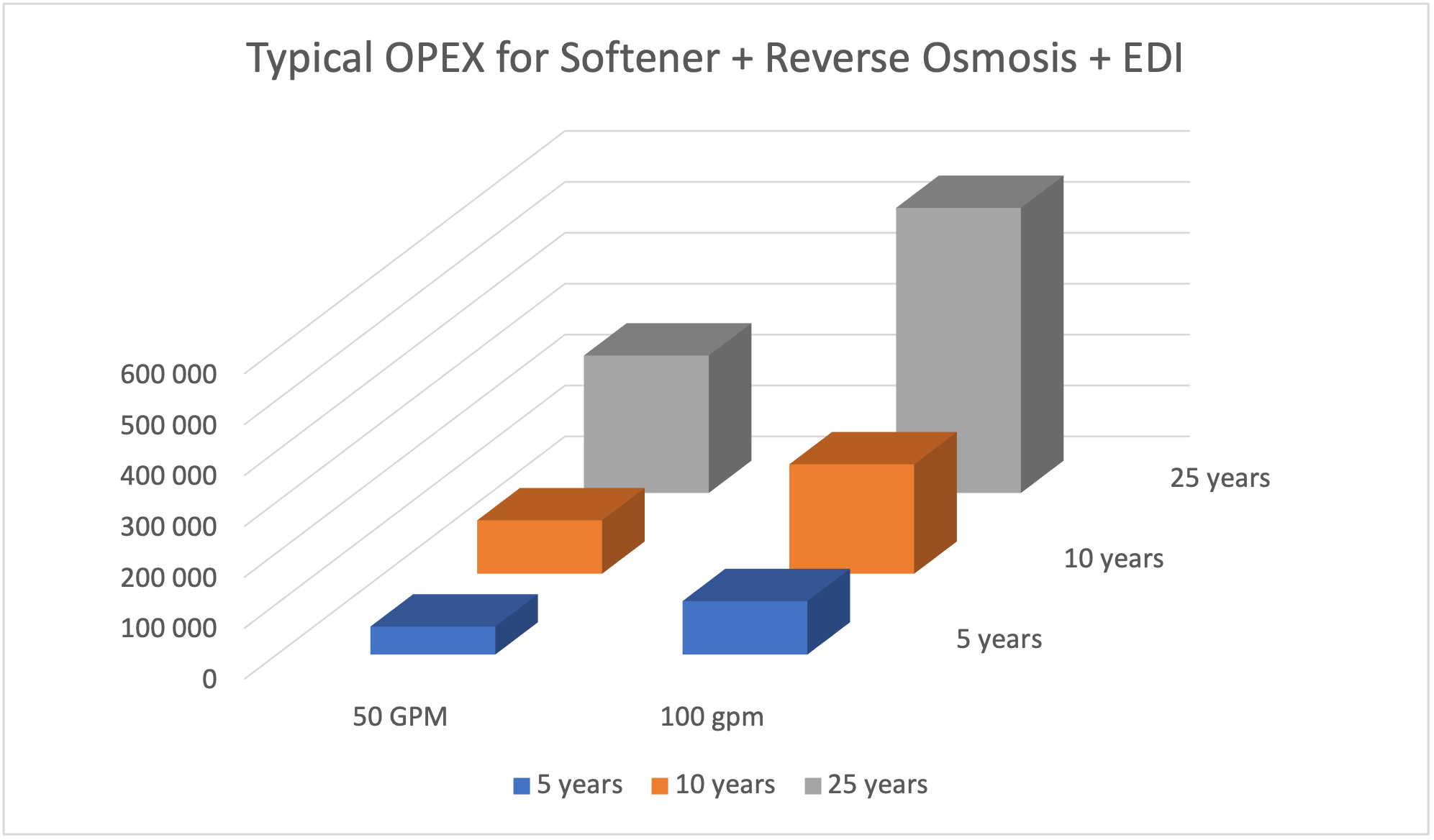La présence de bouilloire dans les différentes industries fait de celles-ci un défi omniprésent. Ces équipements complexes ont des besoins particuliers, et ce, notamment en ce qui a trait à l’eau utilisée à l’intérieur de ces systèmes. Pour assurer l’utilisation sécuritaire et stable de ces équipements, des systèmes de traitements d’eau spéciaux sont nécessaires. Sans ces systèmes, des problèmes peuvent survenir, c’est pourquoi ils doivent permettre la production d’eau d’une qualité constante.
Qu'est-ce qu'un système de traitement d'eau pour l'alimentation d'une bouilloire?
Les systèmes de traitement d’eau permettant l’alimentation d’une bouilloire industrielle sont des systèmes construits sur mesure en fonction des besoins spécifiques de vos installations. Ces systèmes doivent être en mesure de fournir constamment un débit d’eau de qualité dans lequel les impuretés dangereuses pour les bouilloires ont été éliminées.
Qu’ils servent en amont d’une bouilloire à basse ou haute pression, ces types de systèmes de traitement d’eau doivent présenter des capacités multiples afin de bien protéger les équipements. Parmi ces capacités, on doit retrouver le contrôle de la chimie interne des réservoirs afin d’éviter la corrosion à l’intérieur des bouilloires. La maximisation de la réutilisation du condensat de vapeur est aussi importante afin d’optimiser les coûts associer à l’utilisation du système.
Outre ces capacités, les systèmes de traitement d’eau pour alimentation d’une bouilloire doivent permettre de contrôler la corrosion du conduit de retour, d’éviter les temps d’arrêt dus aux pannes de chaudière ou aux bris d’équipements et prolonger la vie de l’équipement.
Qu'est-ce que les systèmes de traitement d'eau pour l'alimentation des bouilloires doivent assurer
De façon générale, ces systèmes doivent être en mesure de minimiser l’entartrage, la corrosion, l’encrassement et toute sorte de défaillance de système. Pour ce faire, une certaine qualité d’eau doit constamment être atteinte. Il est évident que les composantes nécessaires pour atteindre l’objectif souhaité varieront en fonction de la qualité d’eau d’alimentation. En effet, si l’apport en eau provient d’un puits fortement contaminé en fer, il se peut que des étapes additionnelles de traitement soient nécessaires si l’on compare à une alimentation en eau provenant de la ville. D’ailleurs, il ne faut pas oublier que la quantité de contaminants, soit la qualité d’eau, pouvant pénétrer dans la bouilloire varie en fonction de la pression et la température sous laquelle elle est utilisée.
Bref, il existe deux grands types de traitement pour les eaux de bouilloires. À commencer par les traitements extérieurs qui servent à diminuer les quantités de contaminants présents dans l’eau d’alimentation si les concentrations sont trop élevées pour la bouilloire. Parmi les technologies de traitements extérieurs, on peut penser aux différentes technologies de filtration (microfiltration, ultrafiltration, nanofiltration), à certains échangeurs ioniques ou à l'osmose inverse. En ce qui a trait au traitement interne, ils servent à traiter la dureté dans l’eau d’alimentation, permets de conditionner les boues, élimine l’oxygène et empêche la formation de mousse dans l’eau des chaudières. Ces deux types de traitement peuvent être utilisés de façon individuelle ou ensemble. Encore une fois, l’utilisation de l’une ou des deux techniques de traitement varie en fonction de la qualité d’eau d’entrée de l’usine, de la température de celle-ci et de la pression d’opération de la bouilloire ou lorsque l’eau utilisée provient en grande quantité de vapeur d’eau.
En règle générale, il a été démontré qu’un système opérant à basse pression (40kg/cm2 et moins) n’a pas besoin d’une unité de polissage. En ce qui a trait au système opérant à moyenne pression (40kg/cm2 à 170kg/cm2), il est possible d’éviter l’ajout d’une unité de polissage en contrôlant la contamination dans l’eau d’apport grâce à une purge intermittente et continue de l’eau de la bouilloire. En revanche, les systèmes opérants à hautes pressions (170kg/cm2 et plus) doivent posséder une unité de polissage.
De façon générale, la pression interne d’une bouilloire est proportionnelle à la température d’opération de celle-ci. Ce qui signifie qu’une bouilloire haute pression est aussi une bouilloire haute température. C’est pour cette raison que la qualité d’eau a atteindre varie en fonction de la pression interne puisque la solvabilité des contaminants change en proportionnellement à la température.
Quels problèmes peuvent survenir advenant un traitement inefficace
Tout dépendants des contaminants toujours présents dans l’eau lors de son utilisation dans la bouilloire et de la situation, les problèmes pouvant survenir suite à un mauvais traitement de l’influent varient entre l’entartrage, la corrosion, l’encrassement et la défaillance complète du système.
Comme nous l’avons précisé plus haut, la qualité d’eau nécessaire à votre bouilloire change en fonction de sa pression/température d’opération. Nous conseillons généralement de vous fier au manuel du fabricant pour mieux comprendre vos besoins de traitement d’eau relativement à vos équipements.
L'entartrage
L’accumulation de tartre peut être causée par la présence de silice magnésium, fer, aluminium ou de calcium. Le tartre s’accumule généralement à l’intérieur des tuyaux du système et peut causer des problèmes variés. Lorsqu’une trop grande quantité de tartre s’accumule, la pression interne des tuyaux et le débit de ceux-ci peuvent être affectés puisque la dimension interne est affectée par une couche d’accumulation.
Ensuite, l’entartrage est susceptible de causer une surchauffe du système puisque les accumulations de tartre isolent en quelque sorte les tuyaux et ainsi augmente l’accumulation de chaleur interne du système.
Bien qu’il y ait des exceptions, pour l’opération d’une bouilloire à basse pression, l’ajout d’un système d’adoucisseur simple permet généralement de remédier aux problèmes d’entartrage. Pour la protection des bouilloires haute pression, il faut des technologies plus performantes comme des adoucisseurs, une osmose inverse, de, l'électrodeionisation ou un système de déionisation quelconque.
Corrosion
Pour commencer, la corrosion des bouilloires va avoir tendance à s’amorcer là où la température est la plus élevée puisque cela facilite le processus de corrosion. C’est généralement dû à l’oxygène dissout et au dioxyde de carbone présent dans l’eau que la corrosion a lieu. Un système trop corrodé présentera des faiblesses à bien des endroits et peut finir par ne plus fonctionner dus à des fuites.
Puisque la corrosion peut être causée par bien plus que seulement l’oxygène dissout ou le dioxyde de carbone, les techniques permettant la réduction des risques de corrosions sont compliqués et variés. En ce qui a trait à l’oxygène dissout, l’ajout de produit chimique tel l’azote permet la réduction de celle-ci, mais d’autres alternatives peuvent aussi réduire ce paramètre.
Création de mousse
L’accumulation de mousse à l’intérieur des bouilloires est problématique puisque ces mousses sont un indicateur de la présence de matières dissoutes dans l’eau. Lorsqu’une bouilloire est utilisée pour fournir des équipements comme des turbines, la présence de mousse, ergo de matières dissoutes, peut poser problème puisque ces matières dissoutes peuvent venir s’accumuler sur les parois des turbines et causer un ralentissement de celles-ci et même des risques de bris majeur.
Pour empêcher la formation de mousse dans une bouilloire, il est important de surveiller l'alcalinité et le pH. En ce qui a trait au pH, idéalement, il faut le maintenir à un niveau d’environ 8.5 à 9.5.
À combien peut-on estimer le CAPEX et l'OPEX d'un système de traitement d'eau pour bouilloire?
Afin d’être en mesure d’estimer les coûts pour l’acquisition d’un tel système, nous commencerons par définir un terrain de comparaison. Puisqu’il existe une infinité de situations pouvant faire varier les prix d'un système de traitement d'eau, il nous est impossible de donner un prix exact en fonction de votre situation. En revanche, pour vous donner un aperçu, nous comparerons deux situations fictives.
Il est à noter que ces estimations sont construites sans prendre en compte toutes les caractéristiques auxquelles vous pouvez faire face. Il se peut qu’elle ne représente pas exactement les coûts associés à votre condition.
Situation 1 : Bouilloire basse pression
Dans cette situation, l’eau envoyée vers la bouilloire provient du réseau de la ville. Puisque l’eau est déjà traitée et que la bouilloire fonctionne à basse pression, le simple ajout d’un système d’adoucisseur est suffisant pour assurer un traitement adéquat. Dans les schémas suivants, vous trouverez des informations relatives à deux systèmes d’adoucisseurs d'eau. La seule différence parmi ces deux systèmes est le débit. Le premier offre un débit de 50 gpm alors que le deuxième offre 100 gpm.


- *50 GPM : basé sur une dureté de 10 grains et une régénération toutes les 8 heures.
- * 100 GPM : basé sur une dureté de 10 grains et une régénération toutes les 16 heures.
Situation 2 : Bouilloire haute pression
Encore une fois, l’eau d’alimentation du système de traitement provient du réseau de la ville. En revanche, le système de traitement d’eau fournit une bouilloire haute pression. Pour produire de l’eau adéquatement traitée pour une bouilloire haute pression, ce système de traitement sera en plusieurs étapes. Les étapes de traitement seront comme suit :
- Adoucisseurs ;
- Osmose inverse ;
- Electrodéionisation.
Ci-dessous, vous trouverez deux graphiques présentant un approximatif des coûts d’acquisition et d’opérations pour ce type de système.

 Comme nous l’avons précisé, ces estimations servent à donner une idée des coûts associés à l’acquisition et l’utilisation d’un système de traitement d’eau pour une bouilloire industriel.
Comme nous l’avons précisé, ces estimations servent à donner une idée des coûts associés à l’acquisition et l’utilisation d’un système de traitement d’eau pour une bouilloire industriel.
Conclusion
Les systèmes de traitement d’eau pour l’alimentation d’une bouilloire industrielle sont, comme vous le savez, d’une importance primordiale pour le bon fonctionnement de celle-ci. Puisque les types de traitement nécessaire varient en fonction de plusieurs facteurs (contaminants à extraire, entrée d’eau, type de bouilloire, etc.), il est important de bien s’informer avant la sélection d’une technologie quelconque.
L’adoption du bon système de traitement d’eau ne protège pas seulement la bouilloire contre la corrosion, le tartre et d’autres problèmes pouvant survenir. En effet, le bon système de traitement d’eau assure un environnement sécuritaire pour les opérateurs et optimise les investissements en diminuant les risques inutiles et en maximisant la réutilisation des vapeurs.
Bref, nous espérons que ces informations ont su vous éclairer relativement aux choix d’un système de traitement d’eau pour bouilloire industrielle. Si vous avez des interrogations ou des problèmes quelconques, n’hésitez pas à nous écrire et nous nous ferons un plaisir de vous accompagner dans vos démarches.